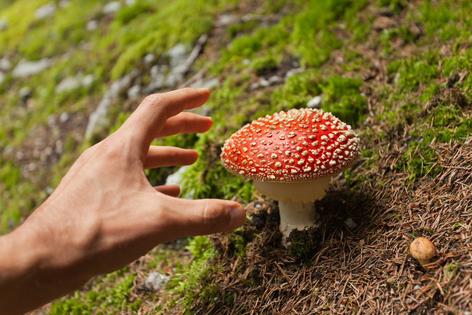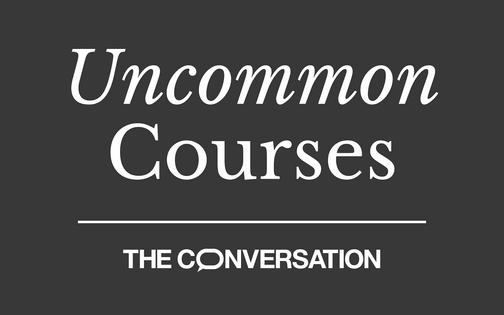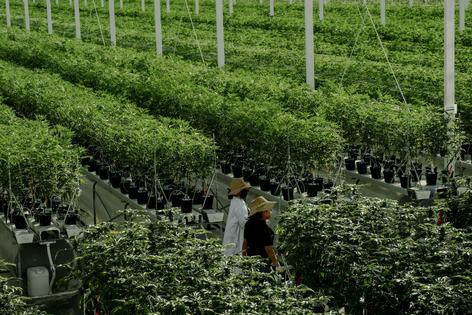'From Magic Mushrooms to Big Pharma' – a college course explores nature's medicine cabinet and different ways of healing
Published in Health & Fitness
Uncommon Courses is an occasional series from The Conversation U.S. highlighting unconventional approaches to teaching.
“From Magic Mushrooms to Big Pharma”
I’m from the foothills of the Appalachians in southern Ohio, where my Grandma Mildred would go out into the woods, which she called her medicine cabinet, to find herbs to use as medicine. I grew up to be an anthropologist, interested in how people around the world heal themselves. In the 1990s, I did my dissertation research in Ecuador and learned how Indigenous people in the Choco region used ayahuasca and other medicines from the forest to assist in the grieving process.
With the legalization of cannabis in many states and increased research on how “nontraditional” drugs can assist people with post-traumatic stress disorder, depression and addiction issues, it seemed like an opportune time to create this course. It’s part of a new interdisciplinary minor at Western Illinois University called “Cannabis & Culture” that offers students a foundation for understanding the social and cultural context, history and politics of nature-based medicine use in the United States and around the globe.
The course looks at how different peoples and cultures use nature-based medicines to heal themselves. First we establish that there are many ways of knowing the world around us, just as there are many ways to heal ourselves. Some of us rely on Western medicine, others pray, yet others turn to Indigenous or traditional ways of healing that are rooted in nature.
We talk about the ways Western medicine now seeks to validate substances that have been used for healing for centuries, like research into how ginger and turmeric can alleviate inflammation, or the ways cannabis can reduce or even eliminate some epileptic seizures.
We also examine how the pharmaceutical industry has exploited Indigenous peoples’ ethnobotanical knowledge and landscapes for monetary gain.
Using the Amazonian giant leaf frog, or kambô (Phyllomedusa bicolor), as a case study, students learn that at least 15 Indigenous groups have long histories of using the frog’s secretion for its analgesic, antibiotic and wound-healing properties. Eleven patents related to P. bicolor have been granted – all of them in rich countries. Indigenous people have not been compensated for their knowledge.
The current generation of young people are open about mental health issues, and many people are looking for new ways to deal with anxiety, grief, PTSD and depression. My students can discuss their health concerns and learn about alternatives to what they may be accustomed to.
At this politically and racially polarized moment in the U.S., the course also provides the opportunity to discuss how racism, misogyny and discrimination against people of color have influenced scientific research.
Over the course of the semester, students begin to recognize that there is no one right way of healing. More importantly, there is no one right way of being human. It is my hope that students leave seeing that everything is connected, integrally linked to humanity’s relationship to nature.
Scientific materials provided by the Multidisciplinary Association for Psychedelic Studies, a nonprofit that provides some of the only scientific research on psychedelics in the U.S. and promotes awareness of these drugs
“How to Change your Mind,” by Michael Pollan and the accompanying Netflix series
Work of ethnobotanist Mark Plotkin, including his Ted Talk “What the people of the Amazon know that you don’t”
Studying how different cultures approach problems that plague all humans, like being sick and healing our ill, demonstrates to students that there are many ways the world over to solve problems. This course views different approaches not as a problem to be overcome but as a resource that can yield new ways of thinking and new opportunities – a definite advantage in the professional world. I hope students also learn to become advocates for their own health and well-being.
This article is republished from The Conversation, an independent nonprofit news site dedicated to sharing ideas from academic experts. If you found it interesting, you could subscribe to our weekly newsletter.
Read more:
Dwindling tropical rainforests mean lost medicines yet to be discovered in their plants
Starting with Mother Nature’s designs will speed up critical development of new antibiotics
Heather McIlvaine-Newsad does not work for, consult, own shares in or receive funding from any company or organization that would benefit from this article, and has disclosed no relevant affiliations beyond their academic appointment.


















Comments